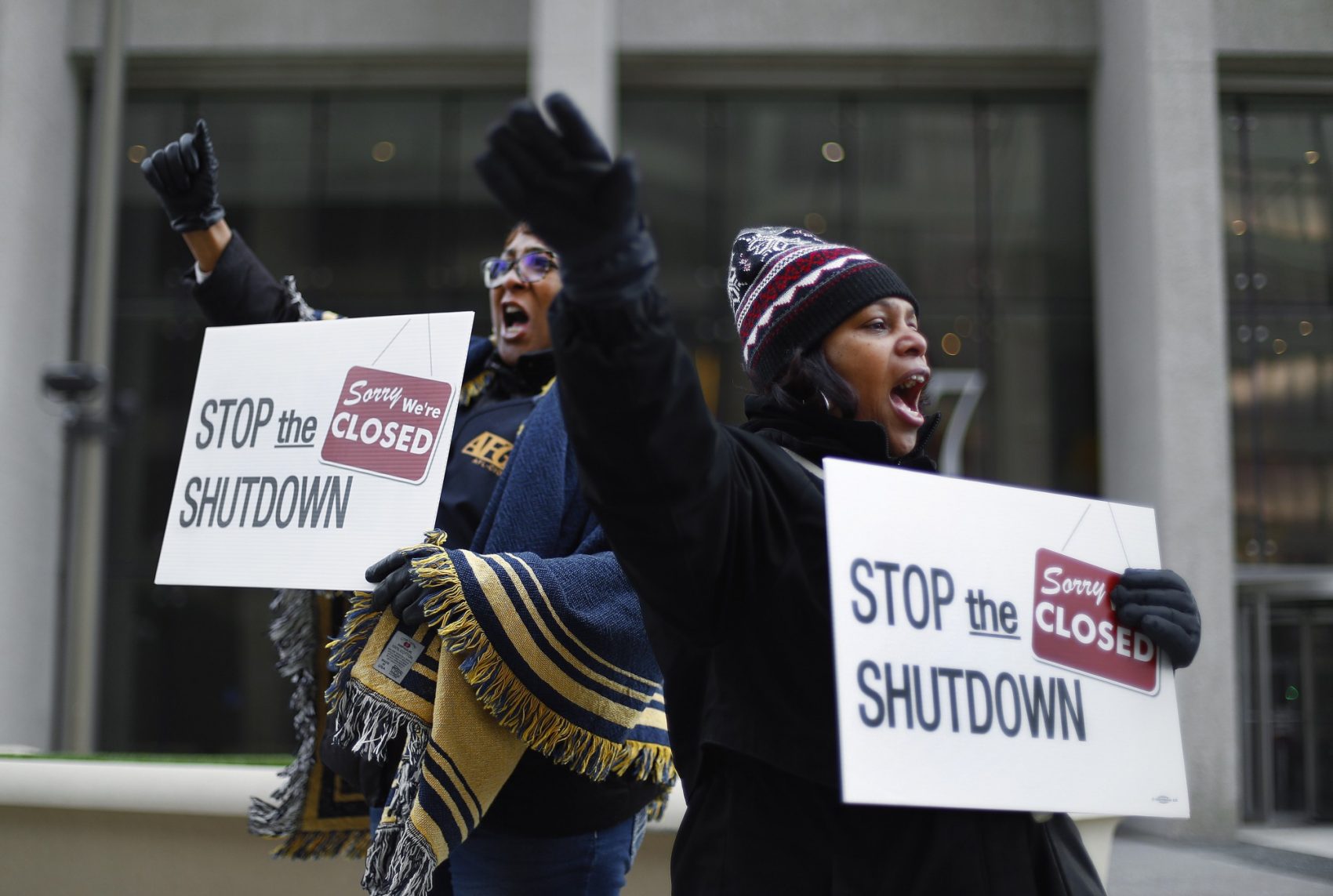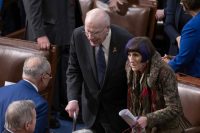It’s back to work this week for 800-thousand federal government workers, furloughed by the partial government shutdown. But all has not returned to normal for them. They’re still waiting to get paid and are concerned about the specter of yet another shutdown next month. Where are we after the longest federal government shutdown in history and what’s next for workers, contractors and the nation?
GOVERNMENT SHUTDOWN FACTS
35 DAYS OF THE GOVERNMENT SHUTDOWN
Started on December 22
- Longest of its kind in US history
- More than 800,000 federal workers affected in nine departments, as well as several agencies
Trump demands $5.7bn in wall funding – a demand Democrats oppose
AFGE
The union is headquartered in Washington, D.C., and is divided into 12 geographical Districts consisting of some 1,100 Locals. More than one-half of AFGE’s members are consolidated into agency-wide bargaining units. Agencies with the highest concentration of union membership include the Department of Defense, the Department of Veterans Affairs, the Social Security Administration, Department of Homeland Security, and the Department of Justice.
Of the 1.75 million people employed by the federal government, only 250,000 are based in the Washington, D.C., metropolitan area. The majority work in federal offices across the nation as police officers, mechanics, lawyers, correctional officers, environmentalists, nurses, mine inspectors and more. The range of jobs performed by both D.C. and federal government employees is impressive and so is their work.
OTHER SHUTDOWNS.
There have been 21 federal government shutdowns since the modern budgeting process began. The reasons have varied from disagreements over abortion to Obamacare, among others.
A list of the shutdowns*:
- Under President Trump (Republican):
- December 2018 – January 2019: Ongoing
- February 2018: One day
- January 2018: Three days
- Under President Barack Obama (Democrat):
- October 2013: 16 days
- Under President Bill Clinton (Democrat):
- December 1995 – January 1996: 21 days
- November 1995: Five days
- Under President George HW Bush (Republican):
- October 1990: Three days
- Under President Ronald Reagan (Republican):
- December 1987: One day
- October 1986: One day
- October 1984: One day
- September – October 1984: Two days
- November 1983: Three days
- December 1982: Three days
- September – October 1982: One day
- November 1981: Two days
- Under President Jimmy Carter (Democrat):
- September – October 1979: 11 days
- September – October 1978: 18 days
- November – December 1977: Eight days
- October – November 1977: Eight days
- September – October 1977: 12 days
- Under President Gerald Ford (Republican):
- September – October 1976: 10 days

Congresswoman Eleanor Holmes-Norton (D) District of Columbia

Richard Loeb, Senior Policy Counsel, The American Federation of Government Employees







